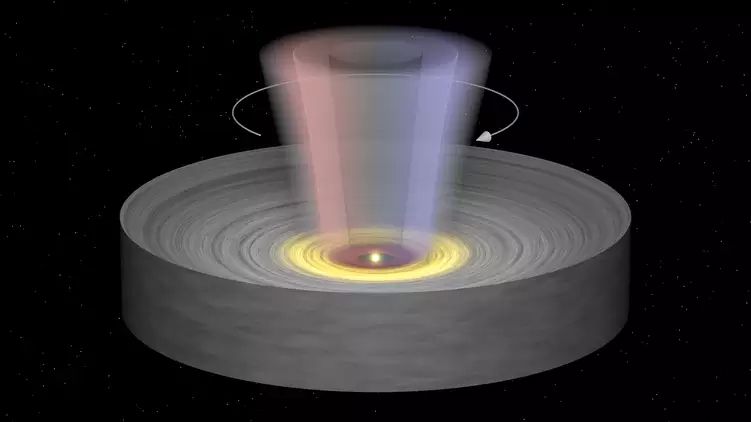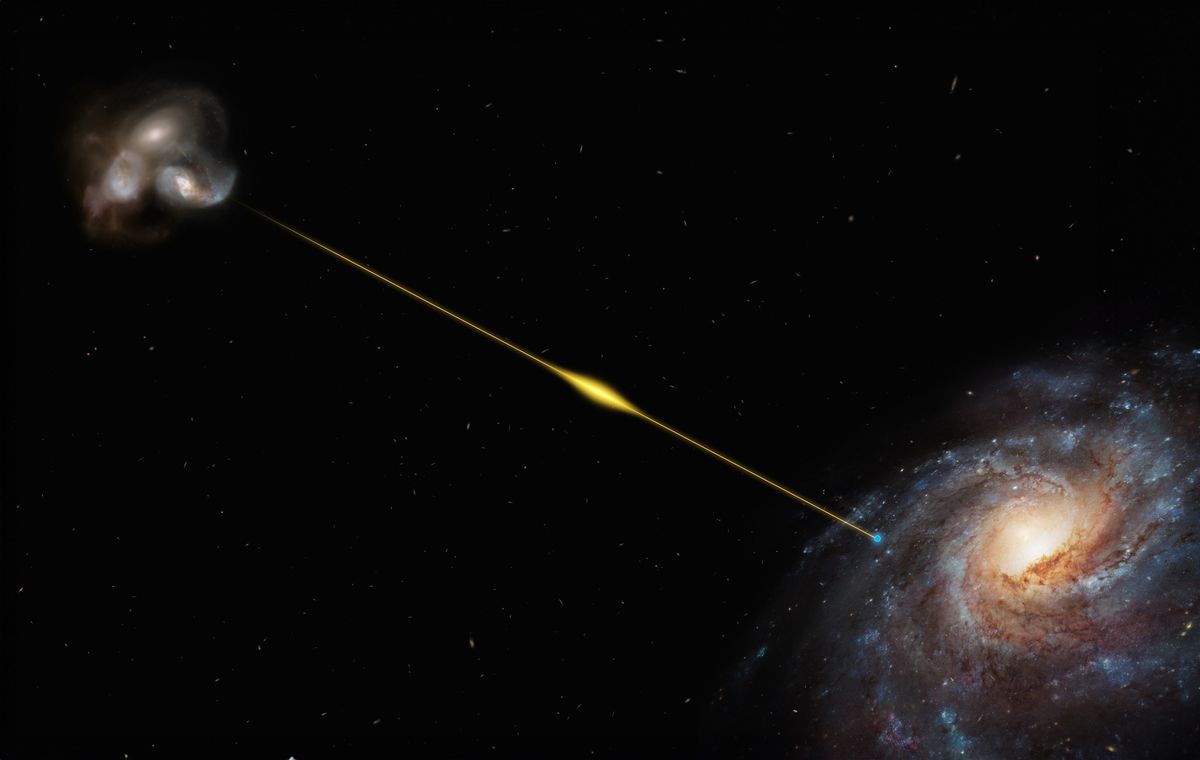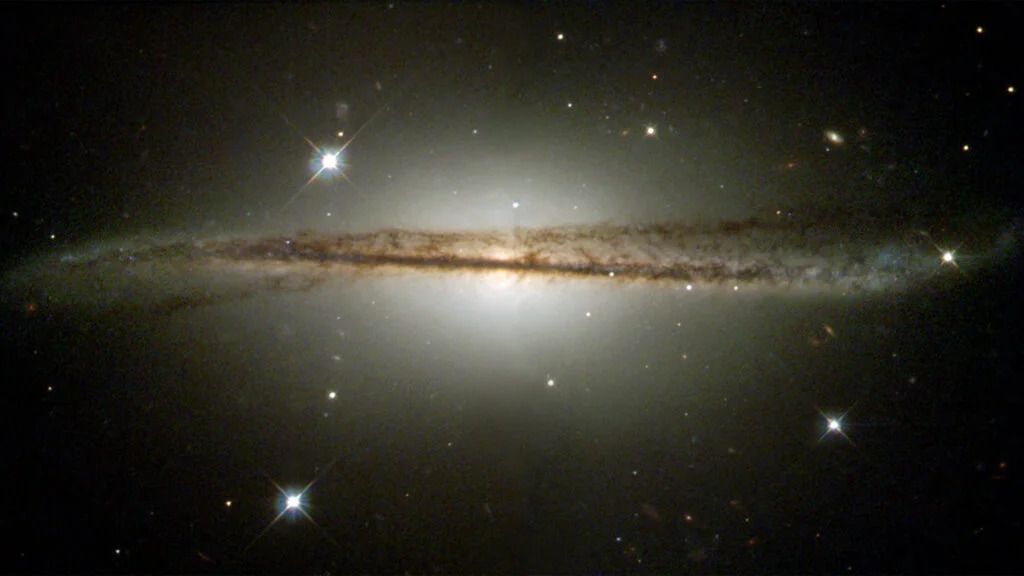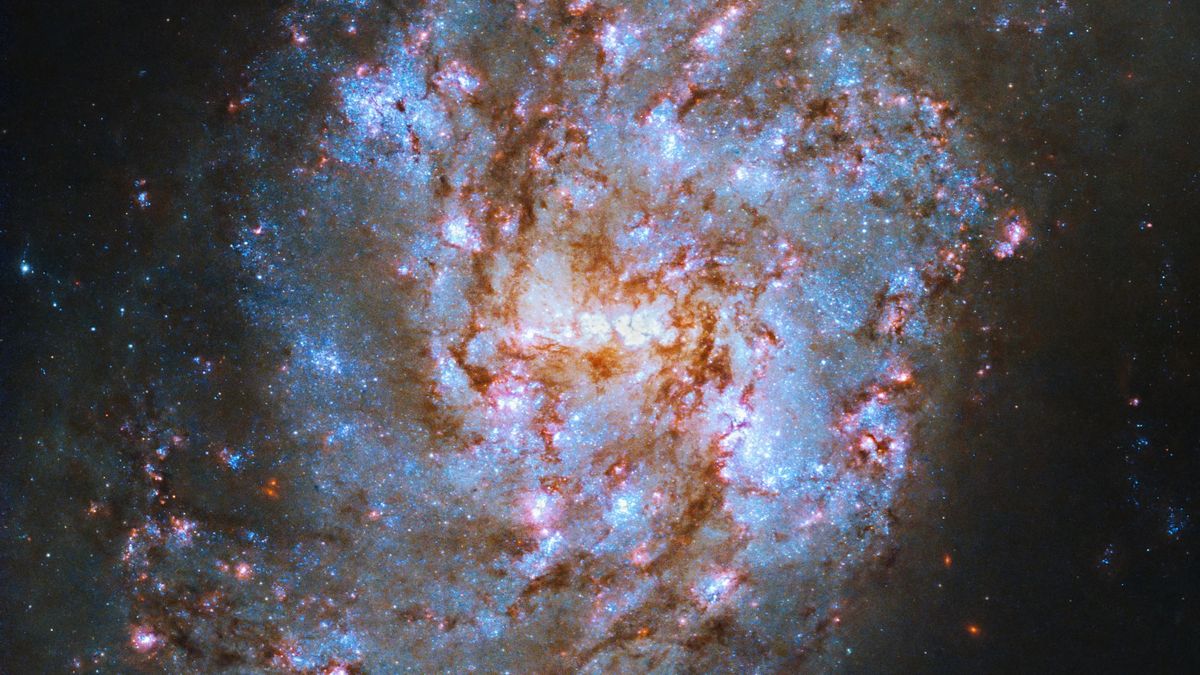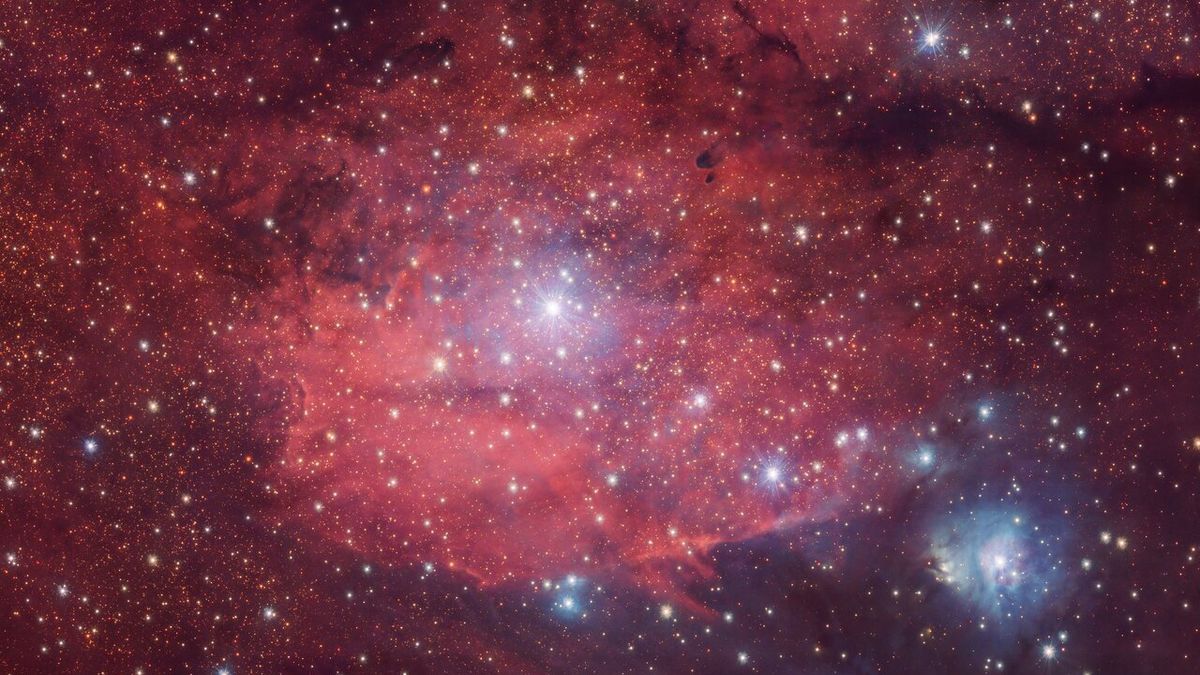Astronomers have discovered an important step in star formation, hitherto unknown, that could save infant stars from ripping themselves apart. The rescue mechanism is associated with “cosmic winds” that blow around clouds of gas and dust — and it’s these clouds that eventually collapse to form hot and dense stellar bodies. Plus, the clouds manage to slow these forming stars’ spins. A team of scientists, led by researchers from the Max Planck Institute for Astronomy arrived at this conclusion by making radio wave observations of a young star in a…
Read MoreTag: Stars and Galaxies
Record-breaking radio burst could help us find the universe’s missing matter
An 8 billion-year-old rapid burst of radio waves, stemming from ancient colliding galaxies, could help astronomers solve the mystery of our universe’s missing matter. The record-breaking Fast Radio Burst (FRB), which is the oldest and most distant example of its kind ever spotted, demonstrates that scientists can use these emissions to effectively “weigh” the universe. FRBs are pulses of radio waves that often last for mere milliseconds, and are a puzzle in themselves because their origins remain a mystery. But the fact that this record-breaking example of one came from…
Read MoreNew ‘galactic atlas’ offers stunning details of 400,000 galaxies near the Milky Way
A new cosmic atlas contains precise details of nearly 400,000 galaxies in the Milky Way’s general neighborhood. And, beyond being of immense use for astronomers seeking hard data, the atlas also features beautiful images that are free for the public to access online and get to know our corner of the universe. Called the Siena Galaxy Atlas (SGA), this digital atlas was created using data from three astronomical surveys collected between 2014 and 2017 at Cerro Tololo Inter-American Observatory (CTIO) and Kitt Peak National Observatory (KPNO). Together, those surveys are…
Read MoreThe Milky Way is warped, and it might be the work of dark matter
The Milky Way is twisted, and astronomers may finally know why. They’re laying the blame on a football-shaped, tilted halo of dark matter that envelopes our galaxy. The common image of our galaxy resembles a flattened disk similar to a vinyl record, but what you might not imagine is the flared skirt at its edge structured like the outer ring of a frisbee. And when scientists have studied the shape of the Milky Way in great detail, they found the disk of our spiral galaxy to also have a warp,…
Read MoreDead star at heart of cosmic graveyard predicts the sun’s fate
For the first time, astronomers have studied a dead star sitting in the heart of a cosmic graveyard of similarly aged stellar bodies. The stellar remnant, a white dwarf, lies at the center of a cloud of stellar wreckage, gas and dust that astronomers call a planetary nebula. It’s located in the open star cluster Messier 37, which is around 4,500 light years from Earth. Not only could studying this white dwarf and its surroundings reveal how it died, almost like examining a cosmic crime scene, but it could also…
Read MoreThe mysteries of the dark universe could be solved by the Rubin Observatory
A pioneering new observatory that will build the most precise map of the universe ever could, in the process, solve two of science’s most pressing mysteries: The nature of dark energy and dark matter . Collectively, these components make up what’s known as the dark universe. The Vera C. Rubin observatory is currently under development on the El Peñón peak of Cerro Pachón mountain in Chile and is set to begin operations in 2025. When it does, Rubin will conduct the Legacy Survey of Space and Time (LSST), observing the entire…
Read MoreHow do astronomers know the age of the planets and stars?
This article was originally published at The Conversation. The publication contributed the article to Space.com’s Expert Voices: Op-Ed & Insights. Adam Burgasser is a Professor of Astronomy & Astrophysics at UC San Diego, and an observational astrophysicist investigating the coolest stars, brown dwarfs and extrasolar planets. Measuring the ages of planets and stars helps scientists understand when they formed and how they change – and, in the case of planets, if life has had time to have evolved on them. Unfortunately, age is hard to measure for objects in space. Stars like the…
Read MoreStar-studded snake-like galaxy shines in gorgeous Hubble Telescope photo
A new Hubble Space Telescope image shines a spotlight on a faraway snake-like galaxy whose swirling arms feature new and old stars. Light from this galaxy started its journey to Earth roughly 80 million years ago, long before the dinosaurs died out. The image, released as part of NASA’s Hubble Galaxy Week from Oct. 2 to Oct. 7, features NGC 1087, a spiral galaxy residing in the constellation Cetus. This particular patch of sky is named after a mythical Greek sea monster and is home to the popular Aquarius and…
Read MoreRosy red nebula glows in gorgeous new European Southern Observatory photo
A rosy red nebula takes center stage in a new photo from the European Southern Observatory (ESO). The expansive cloud of dust and gas, known as IC1284, is an emission nebula, a bright, diffuse cloud of ionized gas that emits its own light. This particular emission nebula, found at the center of the image, glows red from active star formation and the fusion of hydrogen in the region. “Its rosy glow comes from electrons within the hydrogen atoms: they’re excited by the radiation from young stars, but then they lose…
Read MoreNuclear ‘pasta’ cooked up by dead stars could unravel the secrets of stellar afterlife
Imagine cooking pasta at a temperature of over a trillion degrees. But this isn’t just any ordinary Sunday-night dish; it’s the “nuclear pasta” found inside neutron stars. Researchers have just revealed that these strange nuclear shapes penetrate far deeper into the cores of neutron stars than we ever thought possible, and that this can radically alter the properties of those dead stars. Neutron stars are the very definition of extreme. The leftover cores of some of the most massive stars in the universe, they usually cram a few suns’ worth…
Read More